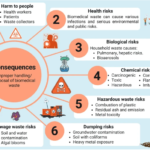The world of System 1 racing is certainly one of high-speed innovation, the place success is usually decided by a workforce’s capability to adapt and react in real-time. As expertise continues to advance, information performs an more and more central function in these split-second selections. Actual-time visualizations, powered by cutting-edge instruments reminiscent of JavaScript charts, are on the forefront of this revolution, enabling groups to extract actionable insights throughout races. This text explores how real-time charting options are remodeling F1 and why they’re crucial for optimizing efficiency on the observe.
The Significance of Actual-Time Knowledge in F1
Fashionable System 1 automobiles are greater than machines; they’re information ecosystems. Lots of of sensors are embedded inside the automobile, capturing crucial metrics reminiscent of tire temperature, engine efficiency, gasoline effectivity, and aerodynamics. Each lap generates gigabytes of knowledge that have to be processed, interpreted, and acted upon instantaneously.
A developer from SciChart, a pacesetter in superior charting options, shared their insights on the subject, emphasizing that “in high-stakes situations like F1, the power to course of and visualize information in actual time is greater than a aggressive edge—it’s a necessity. Charting instruments have to be responsive, sturdy, and adaptable to numerous information streams. Groups depend on these visualizations to make selections that would imply the distinction between victory and defeat.”
Actual-time information visualization permits race engineers to watch the automotive’s situation whereas it speeds across the observe. A temperature spike within the brakes or a dip in engine energy might be detected via a graphical interface. With out such capabilities, engineers can be blind to points that would escalate into catastrophic failures.
This fixed suggestions loop of knowledge ensures not solely the automotive’s optimum efficiency but in addition the driving force’s security. For example, when telemetry information exhibits a drop in tire grip, a well-timed pit cease can forestall a crash and protect race technique. This dynamic decision-making is powered by superior instruments able to dealing with complicated information flows, and JavaScript charts are more and more getting used for his or her versatility and pace.
Actual-Time Charts in Race Technique
Technique is the whole lot in System 1. Pit stops, tire selections, and gasoline administration have to be rigorously balanced to realize an edge. Throughout a race, the margin for error is razor-thin, and even a one-second delay in decision-making can spell catastrophe.
Actual-time charting options play an important function in devising and executing methods. By visualizing information streams from opponents, climate situations, and the automotive itself, groups can alter ways on the fly. For instance, a sudden change in climate could make a dry observe moist, requiring a swap to intermediate or moist tires. A chart displaying rainfall predictions in opposition to lap occasions helps groups determine when to name their driver into the pits.
Moreover, engineers use real-time visualizations to watch rivals. Metrics reminiscent of lap occasions, pace traps, and sector splits are analyzed to determine vulnerabilities in competitor methods. If a rival workforce pits early, as an illustration, charts can assist decide whether or not to observe go well with or maintain out for higher observe situations.
The Function of Know-how in Enhancing Visualization
JavaScript charts have emerged as a number one selection for real-time information visualization because of their flexibility and cross-platform compatibility. Not like conventional desktop-based instruments, JavaScript-powered options are inherently web-based, permitting engineers to entry information from any system with a browser. This mobility is crucial within the fast-paced surroundings of an F1 race, the place selections typically occur on the transfer.
Fashionable JavaScript charting libraries are designed to deal with the high-speed, high-volume calls for of F1. Options reminiscent of real-time streaming, customizable axes, and zooming capabilities allow groups to drill down into particular information factors with out shedding sight of the larger image. Furthermore, these instruments can seamlessly combine with different applied sciences, reminiscent of machine studying algorithms, to supply predictive insights.
For example, predictive analytics can forecast when a part is more likely to fail, permitting groups to switch it preemptively. JavaScript charts visualize this predictive information alongside real-time metrics, making a holistic view that enhances decision-making.
The Pit Wall: A Hub of Insights
The pit wall, also known as the mind of an F1 workforce throughout a race, is a hub of technological innovation. Right here, engineers and strategists work in unison, surrounded by screens displaying real-time information visualizations. Each chart tells a narrative: tire degradation charges, gasoline consumption, lap differentials, and even driver biometrics are displayed in simply interpretable codecs.
These visualizations not solely help decision-making but in addition streamline communication. As a substitute of counting on verbal directions, which might be misinterpreted beneath strain, engineers level to charts to clarify their rationale. For instance, a sudden spike in a temperature graph can immediate a direct radio name to the driving force, instructing them to handle their braking extra conservatively.
Coaching AI with Knowledge
Synthetic intelligence is one other burgeoning space the place real-time charting performs a pivotal function. Machine studying fashions are skilled on historic and reside information to determine patterns and counsel optimum methods.
For example, an AI mannequin might analyze historic race information to find out the best lap for a pit cease. This advice is then visualized utilizing a chart that overlays predicted outcomes in opposition to real-time variables, reminiscent of observe situations and competitor conduct. Engineers can consider these predictions in seconds and determine whether or not to belief the AI’s judgment.
JavaScript charts are notably suited to such integrations, as they’ll dynamically replace as new information is fed into the mannequin. This adaptability ensures that groups are at all times working with probably the most correct and related info.
Past the Race: Knowledge in Improvement
Whereas real-time information is important throughout races, its significance extends far past the observe. F1 groups use the low season to investigate gigabytes of race information, figuring out areas for enchancment in automotive design, aerodynamics, and technique.
Charting options play an integral function on this analytical course of. Engineers use historic information visualizations to simulate numerous situations, testing how modifications to automotive parts or race methods would possibly affect efficiency.
For instance, a chart evaluating wind tunnel information in opposition to on-track efficiency can reveal discrepancies in aerodynamic effectivity. Equally, simulations of gasoline consumption throughout completely different circuits assist optimize engine tuning for particular races.
By leveraging these insights, groups can enter the following season with a stronger, quicker, and extra dependable automotive.
The Way forward for F1 Visualization
As F1 continues to embrace expertise, the function of real-time information visualization will solely develop. Rising tendencies, reminiscent of augmented actuality (AR) and digital actuality (VR), supply thrilling potentialities for charting. Think about engineers utilizing AR glasses to overlay real-time charts immediately onto their visual field, eliminating the necessity for bodily screens.
Furthermore, developments in 5G connectivity will improve the pace and reliability of knowledge transmission, permitting for even quicker updates to real-time charts. This can allow groups to course of and act on info with unprecedented effectivity.
Nonetheless, these developments include challenges. The sheer quantity of knowledge generated by trendy F1 automobiles requires sturdy options able to dealing with large-scale streaming with out lag or lack of accuracy. JavaScript charts, with their capability to deal with complicated datasets and supply real-time updates, are well-positioned to satisfy these calls for.
Conclusion
Optimizing efficiency in System 1 requires an ideal mix of human experience and technological innovation. Actual-time information visualization, powered by subtle instruments like JavaScript charts, has change into a cornerstone of recent F1 technique. From monitoring automotive efficiency to devising race methods and coaching AI fashions, these visualizations allow groups to make knowledgeable selections within the warmth of competitors.
As the game evolves, so too will the instruments that help it. The mixing of real-time charting with rising applied sciences like AI and AR guarantees to push the boundaries of what’s potential, guaranteeing that System 1 stays on the reducing fringe of innovation. For followers and groups alike, one factor is evident: the way forward for F1 lies not simply on the observe but in addition within the information that drives it.









